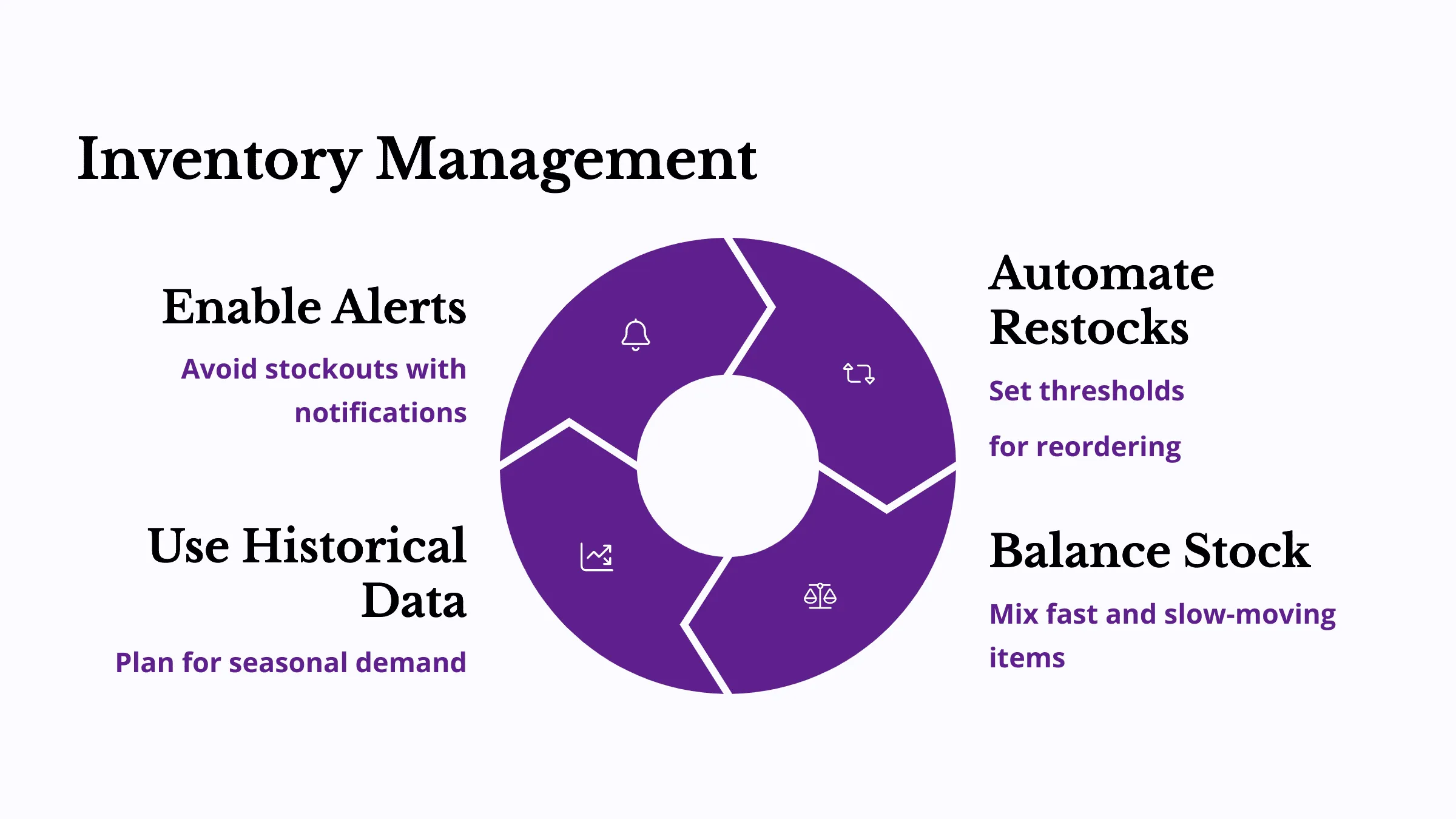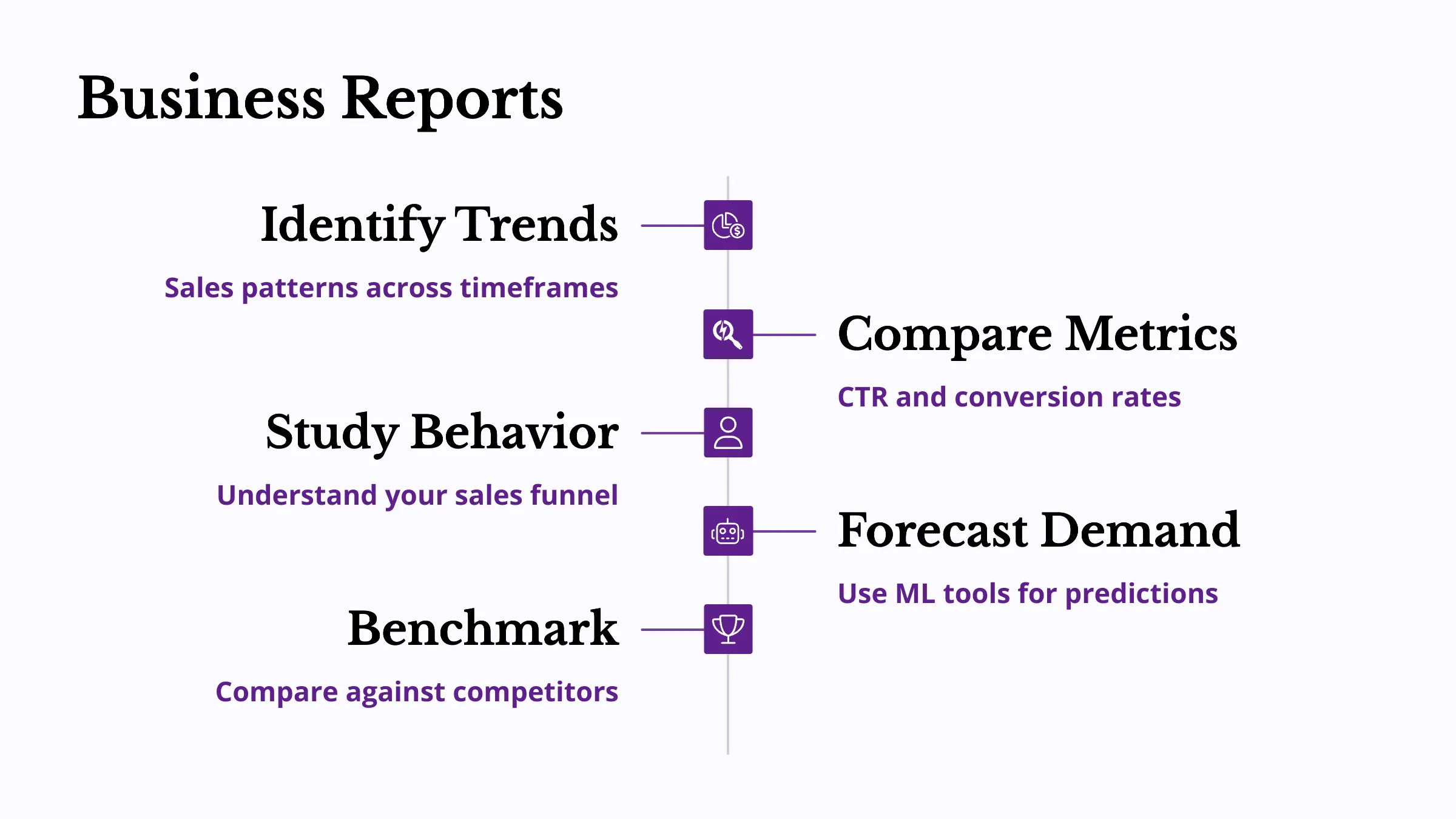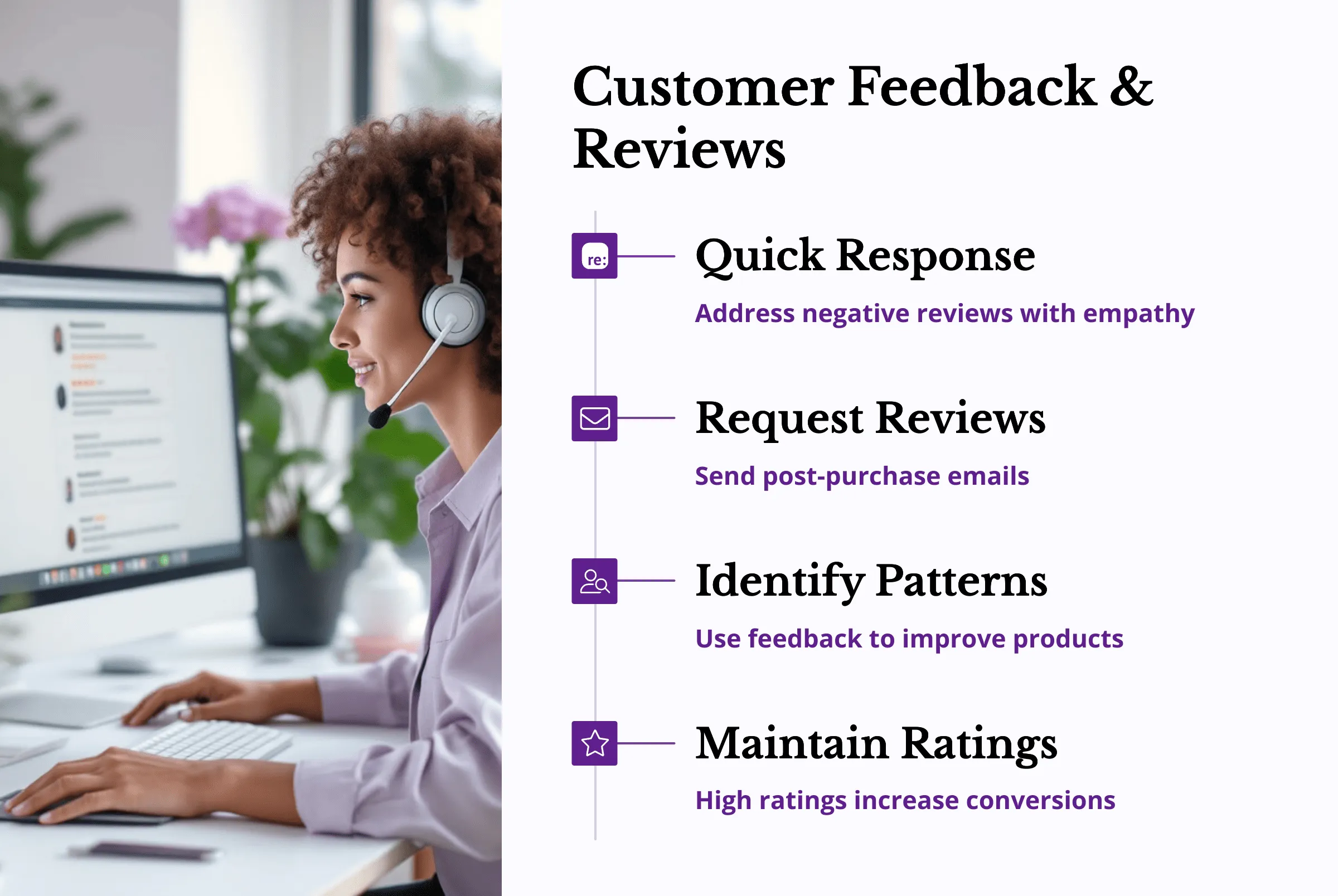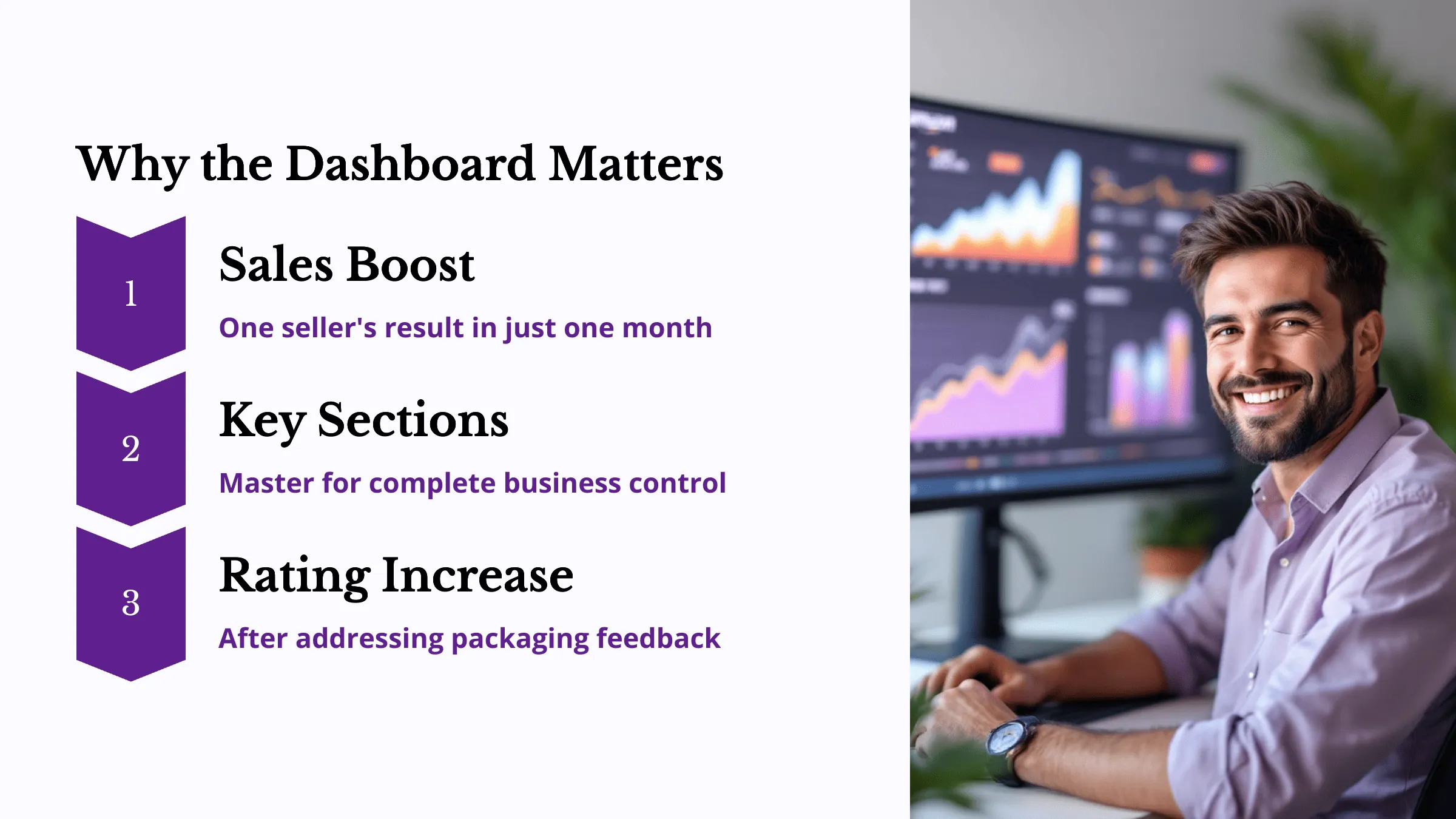Amazon Seller Central dashboard is the key tool for managing your store efficiently. Learn the top 6 dashboard sections every seller must understand to optimize orders, inventory, advertising, and customer satisfaction.

Mastering the Amazon Seller Central dashboard is crucial for every seller aiming to scale their business in 2025. This guide explains the six most important dashboard sections and how to use each one effectively to increase sales, reduce errors, and build customer trust.
Table of Contents
-
What Is the Amazon Seller Central Dashboard?
-
Section 1: Order Management – Improve Fulfillment and Customer Service
-
Section 2: Inventory Management – Keep Stock Under Control
-
Section 3: Advertising & Campaigns – Increase Visibility and Sales
-
Section 4: Business Reports – Make Smarter, Data-Driven Decisions
-
Section 5: Customer Feedback & Reviews – Strengthen Brand Reputation
-
Conclusion: Why the Amazon Seller Central Dashboard Matters
1. What Is the Amazon Seller Central Dashboard?
The Amazon Seller Central dashboard is the central command center for your eCommerce operations. Whether you’re a beginner or a seasoned Amazon seller, using the dashboard strategically can significantly impact your performance. It provides real-time insights into your sales trends, inventory levels, advertising performance, order fulfillment, and customer reviews—all in one place.
With its intuitive layout, you can quickly spot issues like late shipments or high return rates and respond accordingly. The Amazon Seller Central dashboard empowers you to make fast, informed decisions that keep your business growing.
Key Features of the Amazon Seller Central Dashboard:
-
Real-time sales tracking and performance metrics
-
Instant alerts for order delays or return requests
-
Inventory snapshots with restock alerts
-
Advertising campaign metrics (ACOS, impressions, clicks)
-
Customer feedback summaries and review tracking

2. Section 1: Order Management – Improve Fulfillment and Customer Service
One of the most crucial sections of the Amazon Seller Central dashboard is order management. Here, sellers can view current orders, monitor fulfillment status, and respond to customer inquiries.
Tips for maximizing order management:
-
Use status filters to prioritize pending or delayed orders
-
Set up automated order confirmation messages to increase trust
-
Respond quickly to return or refund requests to boost satisfaction
-
Build out a helpful FAQ section to reduce repetitive queries
-
Track delivery timelines to prevent late shipments
For Fulfilled by Amazon (FBA) sellers, the dashboard provides live updates on Amazon’s handling of your orders. This visibility allows you to ensure timely shipping and maintain high performance ratings.

3. Section 2: Inventory Management – Keep Stock Under Control
Inventory issues can make or break your business. The inventory section of the Amazon Seller Central dashboard gives you clear visibility into stock levels and helps prevent overselling or running out of popular items.
Inventory management strategies:
-
Enable low inventory alerts to avoid stockouts
-
Automate restock orders when inventory falls below a set threshold
-
Optimize FBA storage by balancing stock of fast- and slow-moving items
-
Use historical data to plan for seasonal demand
-
Reduce storage costs by keeping inventory lean
Smart inventory control through the Amazon Seller Central dashboard ensures that your products are always available, helping you stay competitive.

4. Section 3: Advertising & Campaigns – Increase Visibility and Sales
Advertising can drive major growth, but only when done correctly. The advertising section of the Amazon Seller Central dashboard allows you to manage PPC campaigns, monitor performance, and fine-tune your targeting.
Advertising optimization techniques:
-
Start with automatic campaigns to identify top-performing keywords
-
Transition strong keywords into manual campaigns for tighter control
-
Monitor your ACOS and adjust bids for profitability
-
Target related or competitor products to expand reach
-
Focus your budget on high-performing campaigns to maximize ROI
Sellers who frequently review and refine their campaigns using the Amazon Seller Central dashboard often see dramatic improvements in visibility and sales.

5. Section 4: Business Reports – Make Smarter, Data-Driven Decisions
The Business Reports section of the Amazon Seller Central dashboard provides deep insight into your store’s performance. Here, you can analyze data related to traffic, conversions, and revenue.
How to leverage business reports:
-
Identify sales trends across different timeframes
-
Compare advertising performance metrics like CTR and conversion rate
-
Study buyer behavior to understand your sales funnel
-
Implement machine learning tools to forecast future demand
-
Benchmark against competitors to develop stronger strategies
With the Amazon Seller Central dashboard, you gain access to the analytics that matter most—helping you adjust your strategy in real-time.

6. Section 5: Customer Feedback & Reviews – Strengthen Brand Reputation
Managing your reviews and customer satisfaction scores is essential for long-term success. The Amazon Seller Central dashboard helps you monitor product ratings and respond to buyer feedback quickly.
Customer review management best practices:
-
Respond to negative reviews quickly with empathy and solutions
-
Proactively request reviews through post-purchase emails
-
Identify common feedback patterns and use them to improve product quality
-
Adjust your listings to clarify misunderstood product features
-
Maintain a high average rating to increase conversion rates
For example, one seller improved their product packaging after noticing repeated feedback about damaged items. As a result, their average rating increased by 0.6 stars and return rates dropped.

7. Conclusion: Why the Amazon Seller Central Dashboard Matters
The Amazon Seller Central dashboard is more than just a tool—it’s the control tower of your business. By mastering its six key sections—Order Management, Inventory, Advertising, Business Reports, and Customer Reviews—you can transform how efficiently and profitably you run your store.
A seller who actively used the Amazon Seller Central dashboard to monitor ad performance saw a 30% sales boost in just one month. That’s the power of data-backed decisions.
Amazon Seller Central dashboard mastery isn’t just helpful—it’s essential for success in 2025 and beyond.

From product fulfillment to website setup, these are practical tools I’ve used myself.
- 👉 Printful – Easily launch a store without inventory and automate production & delivery.
- 👉 GoDaddy Domain Starter – Secure your brand with a custom domain name.
- 👉 GoDaddy Website Builder – Quickly build your website and brand assets in one go.
※ This post contains affiliate links. If you sign up or purchase through the links above, I may earn a commission—at no extra cost to you.
<Amazon Seller Central Setup Guide>
1. Amazon Seller Central Setup Guide: 5 Essential Steps for New Sellers